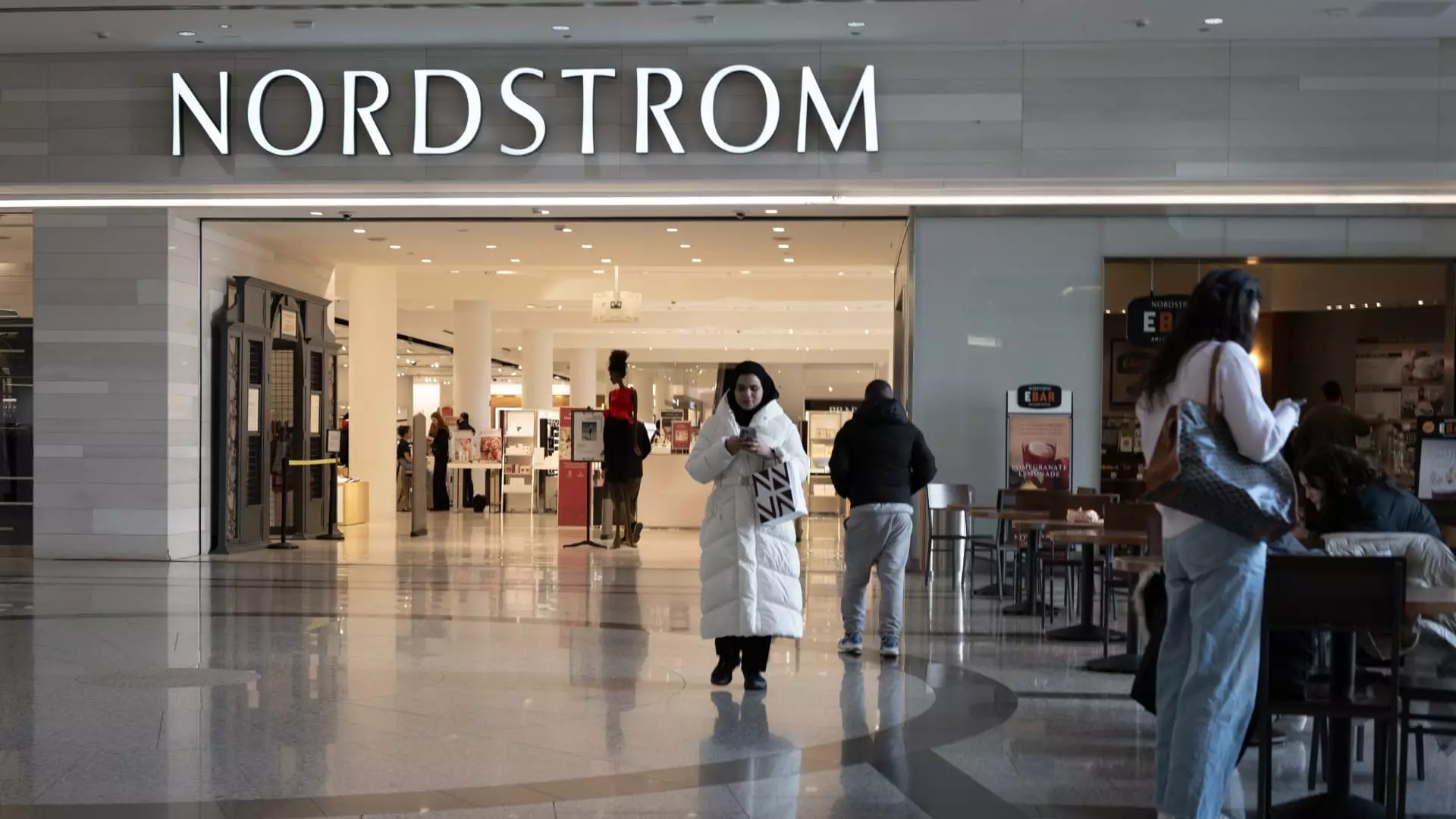In a significant development for the retail sector, Nordstrom has reported a quarterly sales performance that exceeded Wall Street’s expectations. The Seattle-based retailer achieved a revenue increase of approximately 4% year-over-year, driven largely by customer purchases in clothing, footwear, and activewear segments across its flagship department stores and its off-price subsidiary, Nordstrom Rack. This marks a notable achievement within a challenging market environment where many retailers are grappling with consumer spending shifts and economic uncertainty.
Despite this positive news, Nordstrom has adopted a cautious outlook for the upcoming holiday season. The company’s management has issued a full-year sales forecast that predicts a range of flat to 1% growth—a slight adjustment from previous expectations of a potential decline of 1% to an increase of 1%. Such a conservative stance indicates a careful approach to navigating the impending holiday shopping frenzy, which is critical for retail businesses.
Erik Nordstrom, the company’s CEO, expressed confidence in the organization’s strategic initiatives aimed at attracting discerning shoppers—a focus that appears to be yielding results. The notable surge in sales within women’s apparel and activewear, which experienced double-digit growth, signifies a robust demand aligned with consumer trends. Meanwhile, men’s clothing, children’s items, and footwear sectors also saw considerable sales increases, although these fell into lower single-digit growth ranges.
Nordstrom’s results indicate that consumers are increasingly selective about their purchases, which poses both opportunities and challenges for retailers. As Nordstrom seeks to enhance the customer shopping experience, a continuation of this upward momentum will be crucial as the holiday season approaches. However, it is important to note that towards the end of October, the company observed a decline in sales trends, casting doubts on sustained performance over the critical festive period.
In terms of financial outcomes for the fiscal third quarter, Nordstrom reported earnings of $46 million, translating to 27 cents per share, which was a decrease from $67 million or 41 cents per share during the same period last year. Although the net income has dipped, revenue rose to $3.46 billion, surpassing analysts’ expectations of $3.35 billion. On an adjusted basis, earnings per share were reported at 33 cents, suggesting a solid operational footing amidst mixed news.
Interestingly, the retailer’s comparable sales climbed by 4%, outpacing the market’s expectations of a mere 0.7% growth. This growth is essential, particularly when juxtaposed against a landscape where retailers such as Walmart, Best Buy, and Target have reported struggles with consumer willingness to spend on discretionary items. Nordstrom’s sales increase suggests that its selective marketing strategies and consumer-focused approach are resonating well amid broader uncertainties regarding consumer spending.
A noteworthy factor affecting Nordstrom’s sales performance was a calendar shift impacting its renowned Anniversary Sale. Last year, the sale encompassed eight days within the fiscal third quarter, while this year only included one day, leading to an estimated negative impact on sales of about 1%. Yet, even with this hindrance, the company has demonstrated resilience and adaptability by adjusting its strategies and capitalizing on its off-price segment, Nordstrom Rack, to enhance overall sales.
Furthermore, the strategic addition of 23 new Nordstrom Rack stores this year aligns with the company’s goal of expanding its off-price footprint and emphasizes its commitment to growth. The company also initiated a store fulfillment program for online orders across over 100 Rack locations, illustrating its focus on improving operational efficiency and supporting its omnichannel strategy.
Nordstrom’s digital transformation remains a focal point of its growth strategy, with e-commerce sales climbing 6.4% year-over-year, accounting for about one-third of total sales in the quarter. The implementation of enhanced search and discovery features on its website and app, alongside an expanded assortment of affordable items, has facilitated this growth. Notably, the partnership with more than 300 third-party sellers within its marketplace also underscores Nordstrom’s approach to diversifying its product offerings.
As the retail landscape continues to evolve, Nordstrom’s latest update underscores its capability to adapt to changing market dynamics. While the company’s stock has shown a strong 32% increase this year, significantly outperforming the S&P 500, the upcoming months will reveal whether its strategies can effectively navigate the complexities of the holiday season and sustain positive momentum throughout the remainder of the year.

